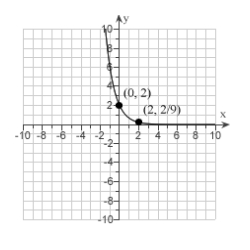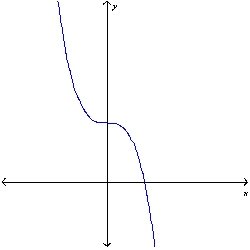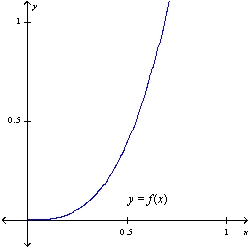A) ![]()
B) ![]()
C) ![]()
D) ![]()
E) ![]()
G) A) and C)
Correct Answer

verified
Correct Answer
verified
Multiple Choice
The half-life of cesium-  is
is  years. Suppose we have a
years. Suppose we have a  -mg sample. How much of the sample remains after
-mg sample. How much of the sample remains after  years?
years?
A) ![]()
B) ![]()
C) ![]()
D) ![]()
E) ![]()
G) A) and C)
Correct Answer

verified
Correct Answer
verified
Short Answer
Find an equation of the tangent line to the curve  at
at  .
.
Correct Answer

verified
Correct Answer
verified
Multiple Choice
Use the laws of logarithms to expand the expression.ln ![Use the laws of logarithms to expand the expression.ln A) ln B) ln (x + 5) - ln (x - 6) C) ln [(x + 5) (x - 6) ] D) ln](https://d2lvgg3v3hfg70.cloudfront.net/TB8390/11eb7c01_1716_708a_acd2_7972a4b08e81_TB8390_11.jpg)
A) ![]() ln
ln ![]()
B) ![]() ln (x + 5) -
ln (x + 5) - ![]() ln (x - 6)
ln (x - 6)
C) ![]() ln [(x + 5) (x - 6) ]
ln [(x + 5) (x - 6) ]
D) ![]() ln
ln ![]()
F) A) and B)
Correct Answer

verified
Correct Answer
verified
Multiple Choice
Find the value of the expression accurate to four decimal places.sinh 4
A) 29.3082
B) 55.5798
C) 15.145
D) 27.2899
F) A) and B)
Correct Answer

verified
Correct Answer
verified
Multiple Choice
Starting with the graph of  , find the equation of the graph that results from reflecting about the line
, find the equation of the graph that results from reflecting about the line  .
.
A) ![]()
B) ![]()
C) ![]()
D) ![]()
E) ![]()
G) All of the above
Correct Answer

verified
Correct Answer
verified
Multiple Choice
Find the numerical value of the expression. 
A) ![]()
B) ![]()
C) ![]()
D) ![]()
E) ![]()
G) C) and E)
Correct Answer

verified
Correct Answer
verified
Multiple Choice
Find the exponential function  whose graph is given.
whose graph is given. 
A) ![]()
B) ![]()
C) ![]()
D) ![]()
E) ![]()
G) A) and D)
Correct Answer

verified
Correct Answer
verified
Multiple Choice
Evaluate the limit using l'Hôpital's Rule. 
A) 75
B) 25
C) 15
D) ![]()
F) None of the above
Correct Answer

verified
Correct Answer
verified
Multiple Choice
If  is invested at
is invested at  interest, find the value of the investment at the end of
interest, find the value of the investment at the end of  years if the interest is compounded
years if the interest is compounded  .
.
A) ![]()
B) ![]()
C) ![]()
D) ![]()
E) ![]()
G) C) and D)
Correct Answer

verified
Correct Answer
verified
Multiple Choice
Find the limit. 
A) ![]()
B) 0
C) ![]()
D) 1
E) ![]()
G) B) and C)
Correct Answer

verified
Correct Answer
verified
Multiple Choice
Suppose that the graph of  is drawn on a coordinate grid where the unit of measurement is an inch. How many miles to the right of the origin do we have to move before the height of the curve reaches 3 ft? Rounded to the nearest mile.
is drawn on a coordinate grid where the unit of measurement is an inch. How many miles to the right of the origin do we have to move before the height of the curve reaches 3 ft? Rounded to the nearest mile.
A) 13,014,952 mi
B) 13015052.4 mi
C) 5.2 mi
D) 13,015,152 mi
E) 1084587.7 mi
G) A) and C)
Correct Answer

verified
Correct Answer
verified
Multiple Choice
Use logarithmic differentiation to find the derivative of the function. 
A) ![]()
B) ![]()
C) ![]()
D) ![]()
E) ![]()
G) C) and E)
Correct Answer

verified
Correct Answer
verified
Short Answer
Determine whether f is one-to-one. 
Correct Answer

verified
Correct Answer
verified
Short Answer
The graph of f is given. Sketch the graph of  on the same set of axes.
on the same set of axes.  3
3
Correct Answer

verified
Correct Answer
verified
Multiple Choice
Find the derivative of the function. Simplify where possible. 
A) ![]()
B) ![]()
C) ![]()
D) ![]()
E) ![]()
G) C) and D)
Correct Answer

verified
Correct Answer
verified
Short Answer
Find the domain, range, and x-intercept(s) of the function. 
Correct Answer

verified
Domain:  R...
R...View Answer
Show Answer
Correct Answer
verified
View Answer
Multiple Choice
Use the laws of logarithms to write the expression as the logarithm of a single quantity.4 ln 5 -  ln (x + 6)
ln (x + 6)
A) ![]()
B) ![]()
C) ![]()
D) ![]()
F) B) and C)
Correct Answer

verified
Correct Answer
verified
Multiple Choice
Find the exact value of the expression. 
A) ![]()
B) ![]()
C) ![]()
D) ![]()
E) ![]()
G) A) and E)
Correct Answer

verified
Correct Answer
verified
Short Answer
Solve each equation for x.(a)  (b)
(b) 
Correct Answer

verified
Correct Answer
verified
Showing 21 - 40 of 43
Related Exams